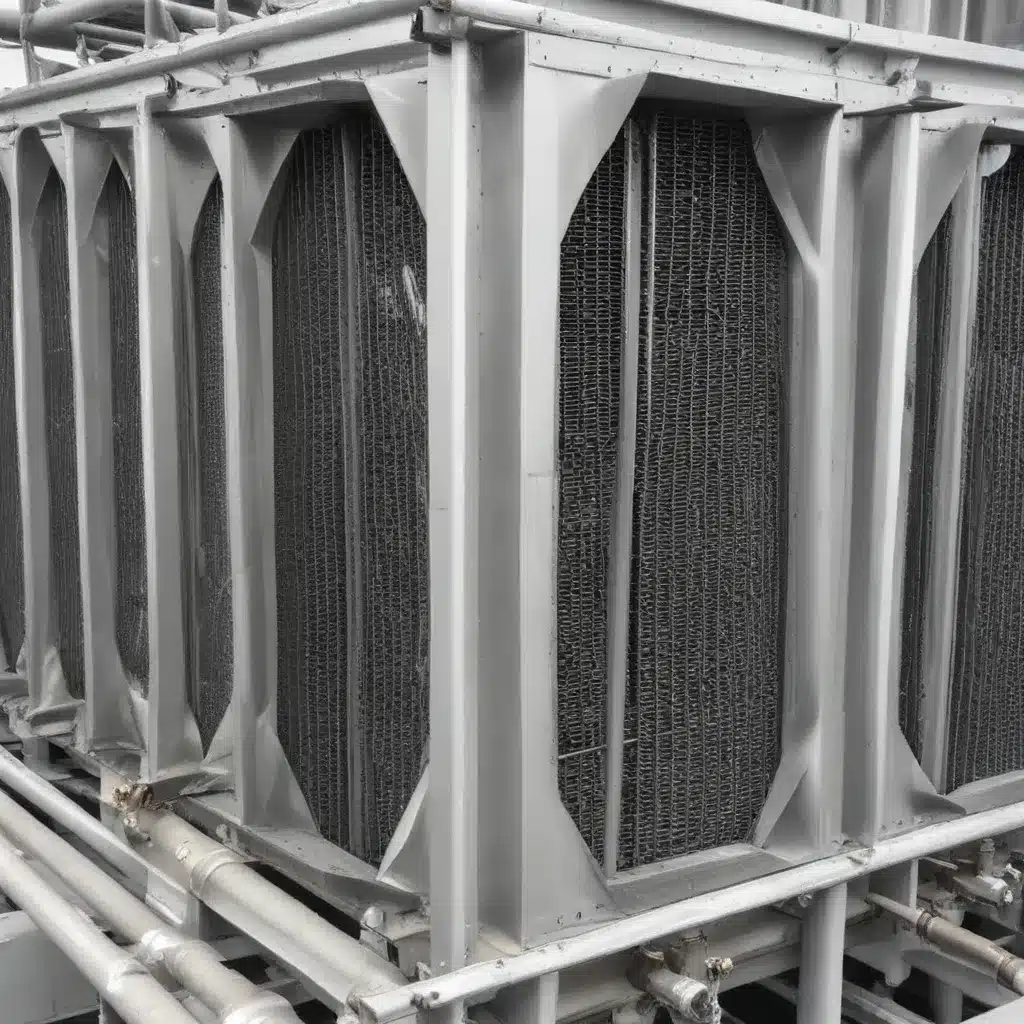
The Challenges of Fouling in Air-Cooled Heat Exchangers
Air-cooled heat exchangers (ACHEs) play a critical role in a wide range of industrial applications, from power generation and chemical processing to HVAC systems. These robust, efficient, and versatile heat transfer devices leverage the ubiquitous availability of air as the cooling medium, making them an attractive alternative to their water-cooled counterparts. However, the very nature of an ACHE’s operation, which exposes its surfaces to the ambient air, also introduces a significant challenge – fouling.
Fouling, the unwanted deposition of contaminants on the heat exchanger surfaces, can severely degrade ACHE performance over time. This accumulated buildup of airborne particulates, salts, and organic matter reduces heat transfer effectiveness, increases pressure drop, and leads to higher energy consumption. Left unchecked, fouling can even cause premature equipment failure, leading to unplanned downtime and costly repairs.
Addressing the scourge of fouling is, therefore, a critical priority for ACHE operators and designers. Innovative strategies that combine preventative measures, intelligent monitoring, and optimized cleaning regimes are essential to maintaining peak ACHE performance and minimizing the associated operational costs.
Proactive Fouling Prevention Strategies
The first line of defense against ACHE fouling lies in the design and material selection phase. Savvy engineers can incorporate features that discourage the accumulation of contaminants, such as:
- Optimized Fin Geometries: Streamlined fin designs with reduced surface roughness and strategically placed vortex generators can minimize the adhesion of particulates.
- Durable Coatings: Applying specialized surface coatings, like hydrophobic or superhydrophilic treatments, can repel water, oils, and other common fouling agents.
- Improved Air Filtration: Incorporating high-efficiency air intake filters can intercept a substantial portion of airborne contaminants before they reach the heat exchanger surfaces.
By taking a proactive approach to fouling mitigation during the ACHE design stage, operators can extend the time between required cleaning intervals and improve overall system reliability.
Intelligent Monitoring for Optimized Cleaning Schedules
While preventative measures can significantly reduce the rate of fouling, a well-designed cleaning regime is still essential for maintaining peak ACHE performance. The challenge lies in determining the optimal cleaning frequency – too frequent can lead to unnecessary downtime and operational costs, while waiting too long can result in significant efficiency losses and potential equipment damage.
Innovative monitoring technologies can provide critical insights to help operators strike the right balance. Advanced sensor networks can continuously track key parameters, such as:
- Pressure drop: Monitoring the increase in pressure drop across the ACHE can indicate the onset of fouling.
- Heat transfer efficiency: Measuring changes in the heat transfer coefficient can quantify the impact of fouling on overall system performance.
- Vibration and acoustic signatures: Detecting vibration or acoustic anomalies can reveal the presence of excessive deposits or blockages.
By integrating these real-time monitoring data with predictive models, plant managers can optimize their cleaning schedules, minimizing the impact on production while preserving ACHE performance. This “just-in-time” approach to cleaning can yield significant cost savings and operational improvements compared to rigid, time-based maintenance routines.
Innovative Defouling Techniques
Once the decision to clean the ACHE has been made, operators must choose the most effective and efficient cleaning method. Traditional approaches, such as manual brushing or high-pressure water washing, can be time-consuming, labor-intensive, and potentially damaging to the heat exchanger surfaces.
Fortunately, new and innovative defouling techniques are emerging that can streamline the cleaning process and enhance its effectiveness:
Automated Pressure Washing Systems
Automated pressure washing systems can leverage remote-controlled robotic arms to efficiently clean ACHE surfaces without the need for manual intervention. These systems can be programmed to target specific areas, adjust water pressure and flow rates, and even incorporate chemical cleaning agents for stubborn deposits.
Ultrasonically Assisted Cleaning
Ultrasonic cleaning technology utilizes high-frequency vibrations to dislodge and remove fouling deposits from heat exchanger surfaces. This approach is particularly effective for removing hard scale and mineral buildup, and can be applied without dismantling the ACHE.
Thermal Shock Cleaning
Thermal shock cleaning involves rapidly heating and cooling the ACHE surfaces to induce thermal stresses, causing the fouling layer to crack and detach. This method can be particularly useful for addressing organic or biological fouling, which is often more challenging to remove through mechanical means.
Chemical Cleaning Agents
Specially formulated chemical cleaning agents can be used to dissolve or emulsify persistent fouling deposits. While the use of these agents requires careful handling and disposal protocols, they can be a valuable tool in the ACHE maintenance arsenal, especially for tackling stubborn, hard-to-remove contaminants.
By incorporating a diverse array of innovative defouling techniques, ACHE operators can optimize their cleaning procedures, reduce downtime, and extend the operational lifespan of their heat exchangers.
Integrating Predictive Maintenance Strategies
To further enhance the performance and reliability of air-cooled heat exchangers, operators can leverage predictive maintenance strategies that combine real-time monitoring, advanced data analytics, and machine learning algorithms.
Predictive maintenance models can analyze the sensor data collected from the ACHE, identifying patterns and anomalies that indicate the onset of fouling or other performance-degrading issues. By anticipating when maintenance will be required, plant managers can schedule proactive cleaning and servicing, minimizing unplanned downtime and ensuring consistent, optimal ACHE operation.
Furthermore, the insights gleaned from these predictive maintenance systems can inform future ACHE design and engineering decisions, enabling continuous improvement in heat exchanger performance and reliability.
Conclusion: Embracing a Holistic Approach to ACHE Optimization
Maintaining the peak performance of air-cooled heat exchangers in the face of fouling challenges requires a multi-faceted approach that integrates preventative design strategies, intelligent monitoring, and innovative cleaning techniques. By embracing this holistic perspective, ACHE operators can maximize the efficiency, reliability, and longevity of their critical heat transfer assets, ultimately driving down operational costs and ensuring the long-term viability of their systems.
To learn more about the latest advancements in air-cooled heat exchanger technology and maintenance best practices, be sure to visit our website and explore our comprehensive resources.

